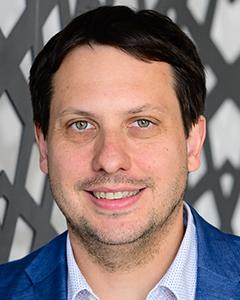
FH-Prof. Priv.-Doz. Dr. techn. Andreas Teuschl-Woller
Program Director Master Tissue Engineering & Regenerative Medicine
Research Focus Manager Bioengineering & Molecular Life Science Technologies
Education
- 2020 | Venia docendi (Habilitation) at Technical University of Vienna
- 2008 –2012 | doctoral thesis “Chemical Engineering E 786 800” at Technical University of Vienna
- 2004 –2008 | diploma studies ”Chemical Engineering E800” at Technical University of Vienna
Professional Activities
- Since 2019 | Head of research focus “Tissue Engineering & Molecular Life Science Technologies” at UAS Technikum Wien
- Since 2018 | Head of Master studies “Tissue Engineering and Regenerative Medicine” at UAS Technikum Wien
- Since 2017 | Founding and Chief Scientific Officer of Morphomed GmbH
- 2016 | Senior Researcher in FFG COIN Project “DiseaseTissue”, Head of City of Vienna Competence Team Tissue Engineering Signaltransduction
- 2015 | Invited researcher in David Kaplan Lab at Tufts University (Boston, USA)
- 2007 –2012 | Ludwig Boltzmann Institute for clinical and experimental Traumatology als researcher / PhD student / “group leader”
Competencies
- Biomaterials
- Tissue Engineering
- Bioreactors
- 3D cell culture
- Cell signaling
- Chemical Engineering
- Scientific Writing